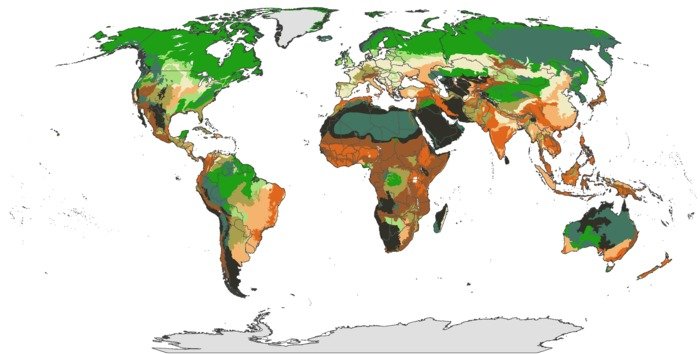NEW YORK, Sept. 16 (UPI) -- U.S. and Australian scientists say they've created a map identifying the areas of the Earth most vulnerable and least vulnerable to climate change.
Scientists from the Wildlife Conservation Society, the University of Queensland and Stanford University created the map using data from the world's ecosystems and predictions of how climate change will impact them, a WCS release said Monday.















